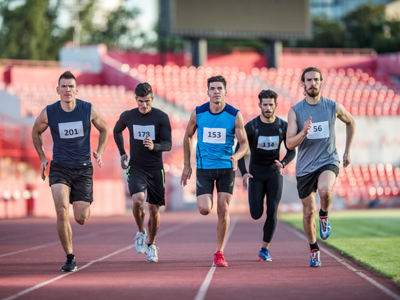
Unit 2 - Anaerobic Respiration
The two forms of respiration - aerobic and anaerobic - are both looked at in GCSE Biology. This quiz focusses on anaerobic respiration, in which glucose is broken down in the absence of oxygen, releasing energy - but also lactic acid.
Respiration is one of the key features of all living creatures. Aerobic respiration occurs where there is a plentiful supply of oxygen. Where the oxygen supply is more limited, anaerobic respiration takes place. During anaerobic respiration, considerably less energy is released by the cell. It involves the incomplete breakdown of glucose which produces lactic acid in the muscles of an animal, and alcohol plus carbon dioxide when it occurs in yeasts and bacteria.
During exercise, breathing rate increases to get more oxygen into the body which is transferred to the blood in the lungs. Heart rate increases to pump more blood round the body but, during hard exercise, the body is unable to supply sufficient oxygen to the muscle cells. This results in anaerobic respiration.
Ready for more?
not all...
quizzers. Try to win a coveted spot on our Hall of Fame Page.







